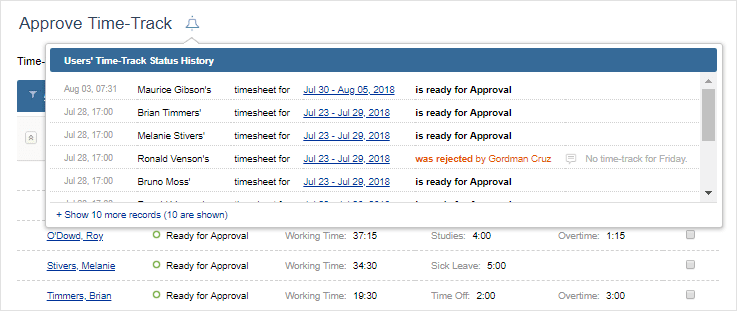It wouldn’t be an exaggeration to say that one of the biggest challenges nonprofits face is to utilize the minimum funds to maximum efficiency. Limited resources make human capital even more important of an asset in a nonprofit organization.
At the same time, ensuring accountability and complying with strict accounting standards would eventually bring a nonprofit organization to a point where it would need certain help with managing internal processes, and time tracking software might come in quite handy in this regard.
Luckily, IT vendors made sure there is a great variety of time tracking software on the market; the question just narrows down to choosing the correct one. What should one pay attention to when selecting a time tracking tool for a nonprofit organization?
1. Allocation of Spent Time
Salaries are generally the largest expense of the organization, Nonprofit Accounting Basics reports. Diligent allocation of spent hours on a regular basis is the key to reflecting the work of a not-for-profit organization. Different time tracking tools allow entering time in various formats:
- Some track it by tasks and projects;
- Others just offer one-time entry level.
Since it is important for non-profit organizations to allocate time against grants and sponsors accurately and in detail, it would make sense to search for a tool that structures the data by sponsor-grant-task. It is also vital that employees enter time in a comprehensive and easy way. So, it’s won’t harm to adopt a timesheet tool like actiTIME for it allows registering vacation, holiday and sick leave in addition to employees’ working hours.
Using actiTIME, your employees can submit leave requests in merely a few clicks. Plus, by integrating actiTIME with Outlook (or any other similar app available on Zapier), you can monitor your own and your staff’s scheduled time off right in your personal web-based calendar.
Check out this post for more information on how to take advantage of Zapier-enabled integrations and make your time tracking process as streamlined, simple and transparent as possible.
2. Reporting Functionality
Since nonprofits are subject to strict accountability, they must provide distinct proof to funders that their donations are being used as supposed to. In order to be reviewed in a convenient way, accurately tracked time still needs to be gathered into reports.
Therefore, reporting functionality is a key factor that nonprofits should pay attention to when selecting a timesheet. Depending on the accounting period, the system should allow generating reports within a user-defined date range. Ideally, reports should be customizable, allowing users to choose such parameters as grantor, project, employees and volunteers, time period, etc.
3. Timesheet Approval by a Supervisor
To comply with the mandates of FASB 117, all timesheets should be reviewed by both the employee and their supervisor and then approved by the latter. There are many ways of doing it, from simply reviewing the timesheet in a printed form and putting one’s signature on it to sophisticated multi-level approval processes.
Whichever way, when choosing a time tracking tool for nonprofits, it is important to make sure that it has some approval functionality that would allow a supervisor to review and quickly approve timesheets individually or en masse. And that’s what makes actiTIME remarkable:
Each weekly timesheet that is ready for approval is easily accessible through a specialized actiTIME interface. Plus, the system has built-in notifications that let you know when anyone’s time entries need to be reviewed + whether another manager has already approved or rejected them.

In addition, you can integrate actiTIME with any email system available on Zapier and set up automatic email notifications to get promptly informed when an employee’s time tracking data is ready for approval. Or you can integrate it with Google Sheets to create a table with a detailed log of changes that users make in their timesheets. This way, you will keep the situation under better control.
4. Estimates and Forecasts
Apart from accountability and payroll, nonprofit organizations can use a time tracker for predicting future workflows and allocating volunteer and employee resources accordingly. Since nonprofits are sometimes tempted to underestimate the time a project will take to demonstrate their efficiency to their donors, advanced estimation tools can come in handy in this regard. It would also make sense to choose a tool that allows generating a report for reviewing the estimates with the actual time that was spent.
5. Flexibility
With a vast variety of time tracking software on the market and just the same great variety of companies out there, it would only be fair to say there is little hope to find a solution that would be suitable for all at once. However, one thing that nonprofits have in common is the necessity to adapt a tool to their organization’s individual needs. Software should be customizable, allowing its user to choose which features they need at the moment and which ones can be turned off for the time being. At the same time, a time tracker should be easy-to-use and implement, allowing nonprofits to spend their time doing important things instead of figuring out how to work with a tool.
6. Price
For-profit companies understand the importance of supporting nonprofits, and software companies are not an exception. When choosing a time tracking tool for your nonprofit organization, don’t forget to inquire about discounts and special deals. For instance, some vendors offer up to 50% off for nonprofits, which would allow spending limited resources wisely not at the expense of functionality.
actiTIME – A Product Combining These 6 Essential Qualities
A high-quality timesheet tool, actiTIME incorporates everything for the utmost benefit of nonprofit organizations: time tracking, comprehensive reports, streamlined payroll and more. Its functionality is very flexible – some features can be switched off / on to suit your needs better. Besides, the tool can be integrated with many other apps through Zapier and API, which ensures a more integrated approach to the management of daily operations and business as a whole. Lastly, actiTIME is available for nonprofits at a discounted price, whereas small teams of three or fewer members can implement it absolutely for free.
















































